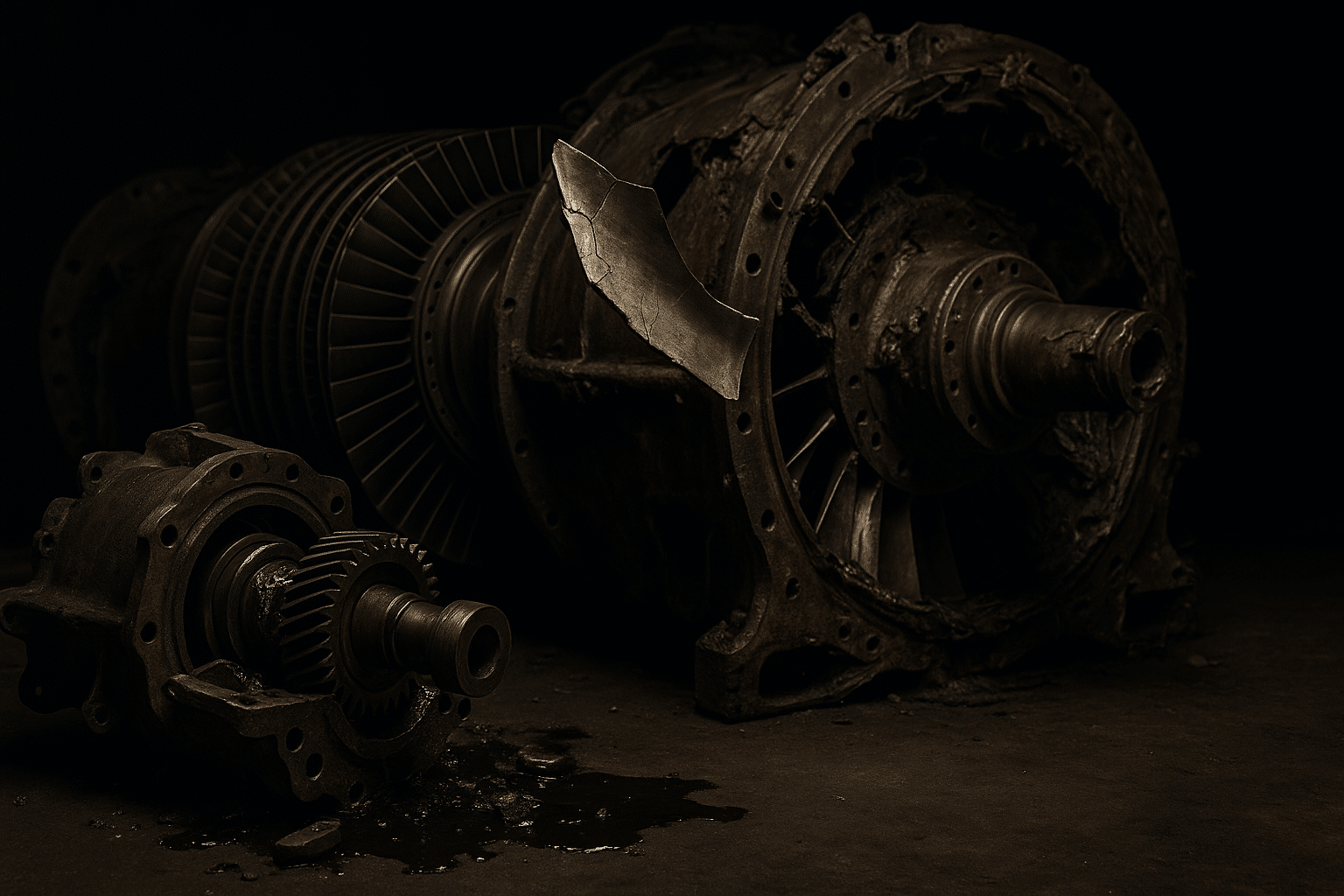Turbine downtime is one of the most underestimated threats to energy producers today. While most operators expect occasional interruptions, the true cost of unplanned outages goes far beyond the initial drop in megawatt output. When gas or steam turbines go offline without warning, the ripple effects—financial, operational, and reputational—can be severe and long-lasting.
Many power generation companies still rely on reactive maintenance, waiting for visible issues or full breakdowns before taking action. While this strategy may appear cost-effective in the short term, it often leads to costly emergency repairs, extended outages, and damaged equipment that could have been preserved with proper foresight. The hidden costs stack up quickly—especially when factoring in penalties, warranty voids, and grid instability.
Proactive maintenance focuses on anticipating problems before they escalate. Leveraging real-time data, advanced diagnostics, and scheduled inspections allows facilities to minimize disruptions, optimize operational efficiency, and extend turbine lifespan. This article explores why investing in proactive repairs is not just smart—it’s essential for long-term reliability and profitability in modern power generation.
Key Takeaways
- Unplanned turbine downtime creates ripple effects that extend far beyond lost megawatts.
- Proactive maintenance strategies are more cost-effective than reactive repairs.
- Investing in predictive maintenance and real-time monitoring can prevent failures before they occur.
- Partnering with a trusted turbine repair provider like Allied Power Group ensures minimal disruption and maximized equipment lifespan.
Understanding the True Impact of Turbine Downtime on Energy Production
Downtime is never just downtime—especially in the power generation sector. Every hour that a gas or steam turbine is offline chips away at energy production, operational efficiency, and bottom-line profitability. Whether it’s a planned outage or a sudden failure, the impact of turbine downtime is felt across the entire energy supply chain.
Direct Revenue Losses from Unplanned Outages
When a turbine goes offline unexpectedly, power producers immediately lose revenue from missed megawatt-hours. These unplanned events can cost hundreds of thousands—or even millions—depending on the plant’s size and capacity.
Additionally, the cost of labor during emergency repairs often doubles due to the urgent nature of the service. Fast-tracked repair costs and overnight part deliveries compound the financial burden. What might seem cost-effective in the moment—reactive maintenance—can quickly spiral into an operational and financial pitfall.
Cascading Effects on Grid Reliability and Power Purchase Agreements
Turbine downtime also disrupts grid reliability, especially when outages coincide with peak demand periods. Operators may face penalties for failing to meet obligations under Power Purchase Agreements (PPAs), which are designed around consistent delivery of energy.
“When a single turbine goes offline, it puts more strain on the grid—and opens the door for regulatory scrutiny,” says Jason Brown, the SVP of Business Development at Allied Power Group. “You’re not just dealing with mechanical failure; you’re facing contractual exposure.”
In regulated markets, this can trigger audits, investigations, or forced buy-backs at less favorable rates. In deregulated markets, the loss of trust can jeopardize future deals.
Environmental and Regulatory Penalties
Turbine malfunctions—especially in older units—can lead to emission spikes. This may violate environmental compliance standards, resulting in regulatory fines or shutdown orders. Often, these issues stem from neglected inspections or delayed turbine maintenance that allowed minor issues to escalate into major violations.
Proactive maintenance helps address potential issues before they become regulatory liabilities. Through routine inspections and condition monitoring, plants can maintain emissions compliance and avoid the hidden costs associated with fines or penalties.
Hidden Cost of Turbine Downtime Beyond Lost Generation
While lost generation is often the first concern, the hidden costs associated with turbine downtime can quietly bleed operational budgets and damage long-term value.
Emergency Repair Premiums and Expedited Shipping Costs
Emergency repairs and unscheduled downtime require rapid mobilization of maintenance teams, after-hours labor, and costly overnight shipping of specific parts. These logistics costs can often match or exceed the actual repair costs, especially when downtime affects multiple units.
“Emergency repairs come at a premium. You’re paying for speed—not sustainability,” explains Aaron Frost, Director of Technology at Allied Power Group.
It’s also worth noting that global supply chain delays have made expedited shipping even more unpredictable and expensive. Proactively planning turbine maintenance during off-peak windows gives facilities better control over cost and service quality.
Collateral Damage from Catastrophic Failures
Reactive maintenance strategies often result in waiting for equipment to fail before initiating service. This can lead to catastrophic breakdowns, damaging adjacent systems.
For instance, a failed bearing may destroy surrounding components, including rotors and casings, multiplying the overall repair bill.
Here’s a breakdown of common failure scenarios and their ripple effects:
| Failure Type | Collateral Damage Potential | Increased Repair Costs |
|---|---|---|
| Rotor imbalance | Bearing wear, vibration-related damage | High |
| Blade failure | Casing scoring, combustion issues | Very High |
| Seal degradation | Efficiency loss, heat damage | Moderate |
| Lube system failure | Total turbine seizure | Extreme |
These aren’t just technical setbacks—they’re operational crises that severely reduce equipment life and require extensive service to rectify.
Insurance Premium Increases and Warranty Voidance
Frequent reactive maintenance events, particularly those involving emergency repairs, can trigger higher insurance premiums. Insurers view these as red flags for poor operational practices. Worse, ignoring routine inspections or maintenance program requirements can void OEM warranties altogether.
A proactive approach to turbine service not only extends the useful life of the asset but ensures all coverage remains valid and enforceable.
Reputation Damage and Community Relations Impact
Utilities and power producers are under growing scrutiny from both regulators and communities. Persistent outages or safety incidents—especially those caused by preventable equipment failures—can erode public trust. News spreads quickly in today’s digital era, and one headline can set off years of reputation management challenges.
By investing in proactive maintenance programs, companies demonstrate a commitment to safety, reliability, and accountability—cornerstones of strong community relations.
Proactive Maintenance Strategies That Minimize Operational Disruption
To reduce downtime and extend the lifespan of turbines, proactive maintenance strategies are essential. The focus is no longer just on scheduled checkups—but on data-driven systems that detect potential problems in real time.
Condition Monitoring and Real-Time Analytics
Modern gas and steam turbines are equipped with condition monitoring systems that provide real-time data on temperature, pressure, vibration, and lubrication levels. These analytics help identify abnormal patterns that indicate wear or impending failure.
IoT-powered condition monitoring systems deliver data-driven insights directly to plant engineering teams, enabling them to take action before breakdowns occur. This keeps equipment in optimal working condition and supports efficient operation.
Scheduled Maintenance During Off-Peak Seasons
Regularly scheduled maintenance during off-peak energy demand seasons allows for timely repairs without affecting output or revenue. Aligning these maintenance techniques with energy market cycles is a proven way to minimize disruption and avoid peak-season emergencies.
Maintenance also allows operators to proactively address minor issues, such as seal wear or bearing misalignment, that could later lead to turbine failure.
Predictive Maintenance Using IoT and Digital Twin Technology
Predictive maintenance goes a step further by using digital twin models to simulate turbine behavior and forecast component degradation. This approach uses real-time data, automation, and AI to predict failures before they happen—allowing facilities to adopt a preventive maintenance model.
Digital twin technology helps optimize turbine performance, maximize equipment lifespan, and reduce downtime. Combined with IoT sensors, this strategy provides a powerful toolset for plants looking to minimize operational costs and extend useful life.
Cost-Benefit Analysis: Proactive vs Reactive Maintenance Approaches
While proactive maintenance may require an upfront investment, the long-term cost savings are undeniable when compared to the fallout from relying on reactive maintenance.
Financial Impact of Maintenance Strategies
Let’s take a closer look at the differences in operational costs between proactive and reactive strategies:
| Maintenance Approach | Average Cost Over 5 Years | Downtime Risk | Equipment Lifespan | Emergency Repairs |
|---|---|---|---|---|
| Reactive Maintenance | High | Frequent | Shortened | Common |
| Proactive Maintenance | Lower | Minimal | Extended | Rare |
Proactive maintenance programs reduce the risk of costly emergency repairs and optimize the performance of each turbine. They’re particularly effective for addressing potential issues that could cause inefficient or dangerous operating conditions.
Why Allied Power Group is Your Power Partner in Repairs and Outage Planning
Allied Power Group stands at the forefront of turbine repair and outage solutions. Our proactive maintenance services, including predictive maintenance integration, digital twin deployment, and condition monitoring, ensure your turbines are operating at peak performance year-round.
Whether you’re scheduling repairs, planning inspections, or preparing for a full turbine overhaul, our maintenance teams bring the experience, precision, and responsiveness to deliver reliable results—on time and on budget.
From Houston to global energy sites, our plant engineering support and turbine repair services are trusted by power producers who refuse to settle for less.
Conclusion
Unplanned downtime may seem like an unavoidable cost of doing business in the energy industry—but it doesn’t have to be. The hidden costs of reactive maintenance—from emergency repairs to lost reputation—make a compelling case for investing in a proactive approach.
Adopting proactive maintenance programs, supported by digital twin models and IoT-powered real-time analytics, gives operators the tools to detect failures before they occur. These systems help maximize equipment life, reduce downtime, and support cost-effective operations.
Ultimately, proactive maintenance isn’t just about avoiding unexpected breakdowns. It’s about keeping your turbines—and your business—running efficiently, reliably, and profitably.
Frequently Asked Questions
1. What are the hidden costs of turbine downtime?
Beyond lost energy production, turbine downtime can result in emergency repair premiums, expedited shipping fees, collateral equipment damage, increased insurance premiums, regulatory penalties, and long-term damage to a facility’s reputation. These hidden costs often far exceed the visible price of a single repair.
2. How is proactive maintenance more cost-effective than reactive maintenance?
Proactive maintenance helps identify and resolve minor issues before they lead to unexpected breakdowns. This approach reduces downtime, extends turbine lifespan, and avoids costly emergency repairs—making it significantly more cost-effective over the long term compared to relying on reactive maintenance strategies.
3. What role does predictive maintenance play in turbine reliability?
Predictive maintenance uses digital twin models, real-time data, and IoT sensors to forecast component degradation and prevent failures before they occur. This improves operational efficiency and helps plant operators optimize their maintenance program by scheduling repairs strategically.
4. How can turbine downtime affect power purchase agreements (PPAs)?
Unplanned turbine outages can cause energy providers to fall short of their contractual obligations under PPAs. This may result in financial penalties, lost revenue, and strained relationships with grid operators or off-takers, particularly if reliability issues occur during peak demand seasons.
5. Why should I choose Allied Power Group for turbine maintenance and repairs?
Allied Power Group delivers industry-leading turbine repair and outage planning services that help power producers minimize disruption, reduce downtime costs, and extend the useful life of their equipment. With advanced technology, skilled teams, and a proactive maintenance approach, Allied is a trusted partner in maximizing performance and reliability.

